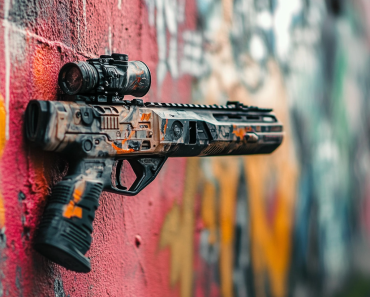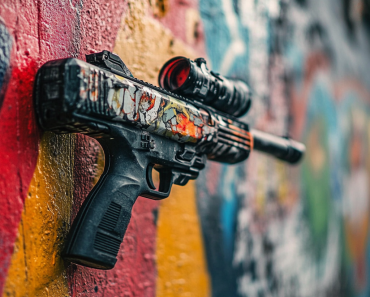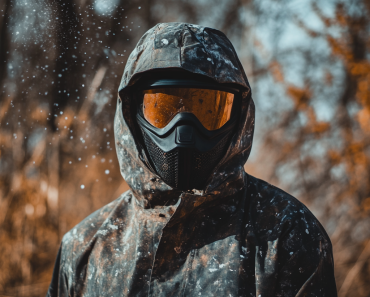Table of Contents
How Are Paintballs Made?
Introduction
For paintball enthusiasts and newcomers alike, understanding how paintballs are made can add depth to the game, making every shot even more fascinating. Paintballs are more than just colorful, breakable spheres – they are carefully crafted with safety, environmental impact, and performance in mind. This article explores the materials, manufacturing processes, storage, and safety aspects of paintballs, so players can fully appreciate what goes into each round they shoot on the field.

How Are Paintballs Made?
Paintball Interior and Exterior
Paintballs consist of two main parts: the outer shell and the inner filling. Each component is specifically engineered to ensure optimal performance, visibility, and environmental safety.
Outer Shell
The shell of a paintball is typically made from food-grade gelatin, similar to the gelatin found in pharmaceutical capsules. Some manufacturers may also use biodegradable plastic alternatives, such as cellulose acetate, which serve the same purpose. This outer shell needs to be sturdy enough to withstand the pressure when fired from a paintball marker but still soft enough to break on impact, creating a visible “splat” on the target.
To improve visibility and player experience, manufacturers often add color to the gelatin shell, usually in shades of yellow, orange, or red. This allows players and referees to more easily distinguish hits and splat marks on the field, providing better gameplay feedback.
Inner Filling
The filling inside a paintball is a water-based, non-toxic paint composed of food-grade materials. Common ingredients include mineral oils, food coloring, calcium, ethylene glycol, and iodine. Paintball manufacturers use dyes derived from natural sources, which are bright and visible, even from a distance. Additionally, this inner fill is designed to be environmentally friendly, breaking down over time without leaving toxic residue, which allows paintball fields to stay clean and safe for wildlife.
The Paintball Manufacturing Process
The process of manufacturing paintballs involves high-precision machinery and thorough quality control measures. Paintballs are produced in large facilities equipped with specialized equipment to ensure consistency, durability, and safety.
Step 1: Gelatin Preparation
To start, two broad strips of softened gelatin are prepared for the paintball shell. These sheets are usually made in vibrant colors for visibility. The softened gelatin is fed into a machine equipped with two counter-rotating drums that will shape it into the familiar spherical shell of a paintball.
Step 2: Paint Injection
The drums have dimples or pockets that mold the gelatin into capsule shapes. Once the drum rotates, a specific amount of paint is injected into the gelatin capsule, which is then immediately sealed by the machine. This precision ensures that each paintball contains the same amount of paint, resulting in consistent weight, balance, and flight patterns.
Step 3: Shaping and Drying
After being sealed, the freshly made paintballs are still soft and malleable. They enter a tumbler, a machine that gently rotates the paintballs, shaping them into perfect spheres. The tumbling process helps the paintballs dry evenly and ensures roundness, a crucial factor for accuracy and distance when fired from a paintball gun.
Once the tumbling process is complete, the paintballs are left to air dry completely. Depending on the specific formulation, this can take anywhere from a few hours to a couple of days. When fully dried, the paintballs are sorted and packaged by weight to ensure consistency in each box.
Storing Paintballs
Proper storage is essential for maintaining the quality and performance of paintballs. If not stored correctly, paintballs can become brittle, deformed, or even useless.
Tips for Storing Paintballs
- Cool, Dry Place: Paintballs should be stored in a cool, dry location away from direct sunlight. Exposure to sunlight can cause paintballs to harden or soften, which affects their performance.
- Room Temperature: While paintballs can handle some temperature fluctuation, storing them at room temperature (approximately 70°F or 21°C) is ideal.
- Refrigeration: If you plan to store paintballs for an extended period, refrigeration can help slow down degradation. However, avoid freezing paintballs, as this can cause the shell to crack and make them unusable.
Paintballs are sensitive to temperature, humidity, and even airflow, so improper storage can lead to damaged or unusable paintballs.
Safety of Paintballs
Modern paintballs are crafted with safety in mind, making them a safe choice for players, the environment, and even incidental ingestion.
Non-Toxic Ingredients
Most modern paintballs are made from food-grade, non-toxic ingredients. Early paintballs used oil-based paints, which were toxic and environmentally unfriendly. Today, however, paintball manufacturers use water-soluble, biodegradable ingredients that are safe for humans and the environment.
Incidental Ingestion and Skin Contact
If a paintball accidentally hits a player’s mouth or splashes on their face, the ingredients in the paint are harmless. The outer shell is made from food-grade gelatin, which won’t harm players if it comes in contact with skin or mouth. While it’s recommended not to eat paintballs, the ingredients are safe for minor exposure.
Pet Safety
While paintballs are generally safe for humans, they should be kept out of reach of pets. Dogs and cats can’t digest gelatin properly, which may cause digestive issues if ingested. In the event of a pet consuming paintballs, it’s recommended to contact a veterinarian for guidance.
Cleaning Paintball Stains
One of the most convenient features of paintballs is that the paint is water-soluble and easy to wash off from clothing and gear.
Steps to Clean Paintball Stains
- Soak in Warm Water: Soak the paint-stained clothing in warm water mixed with mild detergent. This helps to loosen the paint and makes it easier to remove.
- Avoid Harsh Chemicals: Avoid using bleach, strong chemicals, or hot water, as these can set the stain or damage the fabric.
- Machine Wash: After soaking, wash the clothing in the washing machine as usual. This should remove most paintball stains entirely.
Using these steps, players can easily remove paint stains from their clothing, keeping their gear clean and ready for the next game.
Conclusion
In summary, paintballs are designed with safety, performance, and environmental impact in mind. Made from biodegradable materials like gelatin and water-based paints, paintballs provide a safe and fun way to enjoy paintball without harming the environment. With proper storage, paintballs can last for months, and if any paint does get on your gear, it’s easily washable. Understanding the materials and manufacturing process behind paintballs allows players to appreciate the craftsmanship that goes into every shot, making the game even more enjoyable.
Additional Reading
Consider checking out our blog and/or finding your next paintball gear online.






